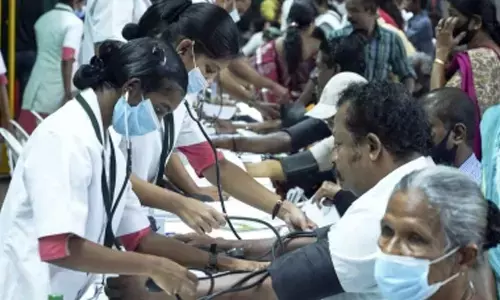Indian crisis management skills have to deliver once again

Indian crisis management skills have to deliver once again
The impact of the Covid-19 pandemic is being felt across the country. Unprecedented crisis has left us broken.
The impact of the Covid-19 pandemic is being felt across the country. Unprecedented crisis has left us broken. Despite all the suffering caused by this coronavirus pandemic, if local healthcare systems emerge stronger and receive more investment, at least it would leave something positive for the future. The nature of the crisis gives us the opportunity and the time to undertake a course correction by addressing the most pertinent structural issues that might usually be avoided in usual circumstances.
This crisis is a reminder of the importance of a well-functioning public health system. It opens up an opportunity for course correction in this sector. An effective public health system would have afforded policymakers greater leeway in deciding about the economic shutdown. However, the choice of preventive strategies against the spread of COVID-19 is limited to stringent lockdowns because of India's public healthcare infrastructure deficit and high population.
Infrastructure stimulus is usually understood as providing finance for highways, high-speed trains and airports. Investing in schools and hospitals is rarely seen as being a crucial part of "infrastructure development". Healthcare's availability and affordability does not receive as much attention in policymaking as hard infrastructure does. This approach needs to change. India's public health expenditure stood at 1.15 per cent of its gross domestic product this must take a quantum leap and must be more than doubled to reach the goal of 2.5 per cent set by the National Health Policy 2017, while being further increased to 3 -4 per cent of the GDP in medium term.
Increasing the share of GDP on health will not only address the infrastructure deficit, improving the quality and productivity of the economy's human capital, but can also reduce the economic cost of the lockdowns. In the relatively short time since doctors detected the first case, the coronavirus pandemic has put the healthcare sector under tremendous strain. Departments dealt with bed and ventilator shortages, testing delays and a lack of personal protective equipment. These issues emphasised some of the improvement opportunities for healthcare professionals to target while simultaneously showing how technology could fill the gaps.
If the funds can be made available, what should the central government spend on? The bulk of the spending should go into upgrading infrastructure in primary and secondary care centres, that is district hospitals and primary health centres. If executed well, these investments will improve the quality of human capital, and create jobs and markets for pharma products and medical devices. The government can be the primary financer or provider of healthcare. It need not necessarily be the producer.
For this, a specially-designed fiscal stimulus can be funnelled into public health, and policy bottlenecks removed so that the sector becomes the engine of GDP growth in the coming months. Subsidised loans, earmarked land, prompt single-window clearances and approvals, tax holidays, and other such fiscal tools can be deployed to manufacture medical devices and medicines and set up hospitals.
As we unwillingly enter into the coronavirus epoch, which will be around be around for some time now, PPPs are again in the forefront as one of the optimal solutions to tackle this pandemic disease that has crippled economies. Large hospitals should be set up on a Public-Private Partnership (PPP) basis. For instance, the Punjab government in Mohali announced a PPP tender on a revenue sharing basis. Countries such as the UK and Australia too have their own approach to PPPs, wherein they focus on the "Development / Rehabilitation of Facilities and Facilities Management".
It is evident that if India focuses on anything it has a capacity to conquer it. The clear visible example is, starting from practically nothing, India has now become the world's second largest supplier of Personal Protective Equipment (PPE) in just 60 days after lockdown. In two months, the industry has grown 56 times. Over 600 companies in India are certified to produce PPE and the country today manufactures more than 4.5 lakh pieces of PPE a day.
If new business models need to be created, now is the time to design them. Affordability, quality and accessibility to proper health care will be key. We will be successful in turning COVID-19 into positive occurrence to an extent, if all citizens across income groups are able to use the public health system equitably. We should convert this global pandemic adversity into an opportunity.
















